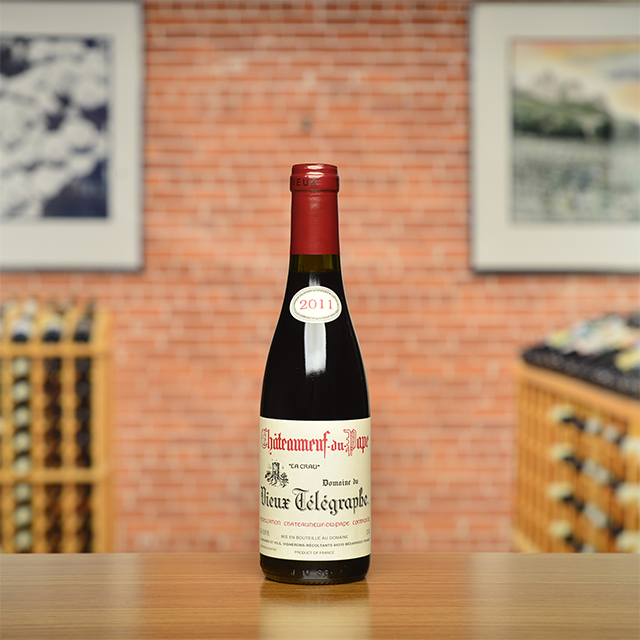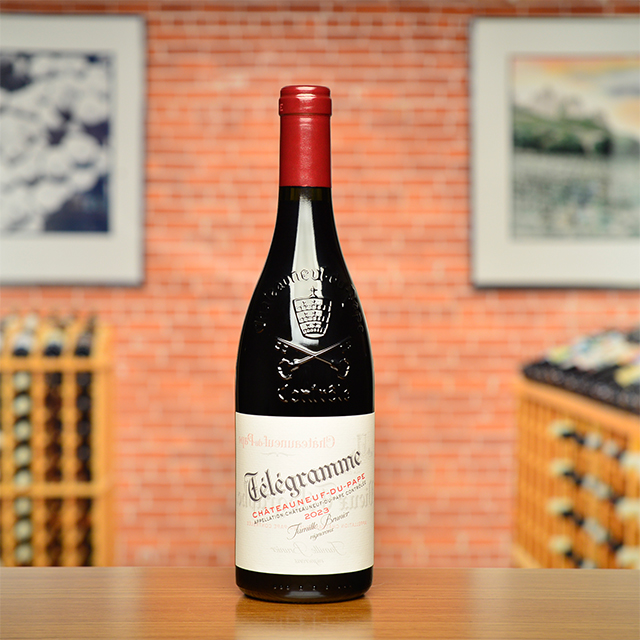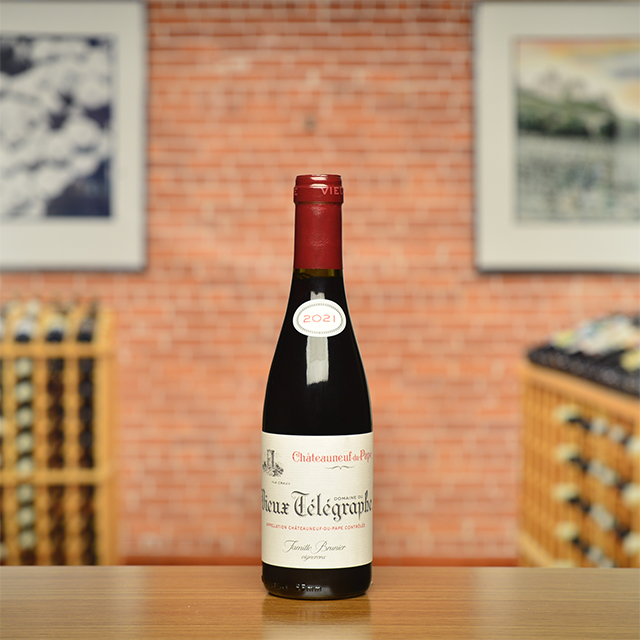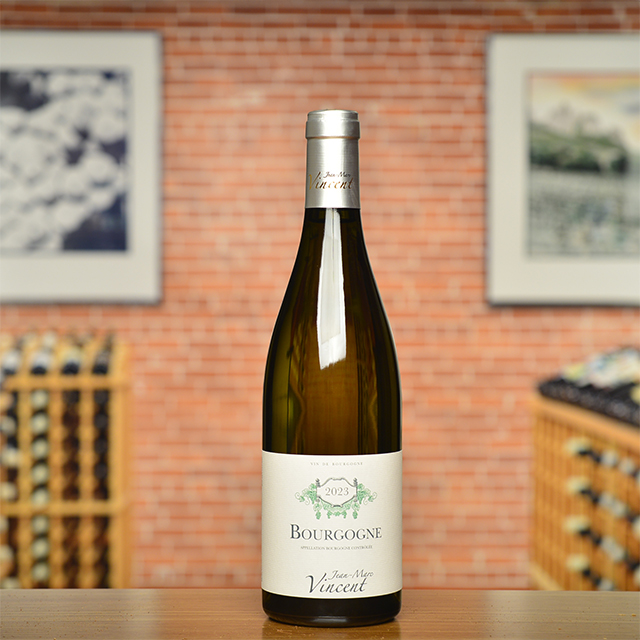Notify me
2018 Châteauneuf-du-Pape “La Crau” MAGNUM
Domaine du Vieux Télégraphe
There is probably no wine more identifiable to our company than VT, as most of us call it around here. Kermit calls it Vieux Télé. The quality and longevity of this noble Rhône red is so incredibly consistent that we almost take it for granted (stress on the almost). As the number of offers hitting your inbox and mailbox climbs to unprecedented highs, it is important to step back and remember the tried and true, the old reliables that remain the best and surest investments in fine wine today. It is also important to remember the heights that old-vine Grenache can reach when planted on these arid, stony plateaus in the shadows of Mount Ventoux. Brothers Daniel and Frédéric Brunier own one of the most enviable sites in Châteauneuf-du-Pape, the magical moonscape of La Crau. Their terroir, their savoir-faire, and their steadfast adherence to tradition have kept these wines among the world’s best, and also among its greatest price-to-quality ratios when you consider their proven track record for aging and developing into marvels. Thirty-plus vintages with KLWM and still going strong, VT remains a pride and a joy to sell and to enjoy.
—Dixon Brooke
| Wine Type: | red |
| Vintage: | 2018 |
| Bottle Size: | 1.5L |
| Blend: | 65% Grenache, 15% Mourvèdre, 15% Syrah, 5% (Cinsault, Clairette, et al) |
| Appellation: | Châteauneuf-du-Pape |
| Country: | France |
| Region: | Southern Rhône |
| Producer: | Domaine du Vieux Télégraphe |
| Winemaker: | Frédéric & Daniel Brunier |
| Vineyard: | 20 to 60 years |
| Soil: | Alluvial deposits, Limestone, Silica, and Molasse (red clay) with galets roulés |
| Aging: | Wine rests in cuves for 10 months, and then ages for another 12 months in foudres, wine is bottled unfiltered, after 22 months of aging |
| Farming: | Organic (practicing) |
| Alcohol: | 14.5% |
More from this Producer or Region

2024 Châteauneuf-du-Pape Blanc “La Crau”
France | Southern Rhône
Clairette, an unsung hero of the south, is the main grape here, undoubtedly one of many key elements to this singular wine.

2023 Vacqueyras Rouge “Doucinello”
France | Southern Rhône
The flavors are mostly deep and dark—stones, licorice, black olive, and blackberry—but the frame is lithe.

2022 Tavel Rosé HALF BOTTLE
France | Southern Rhône
This dark, autumnal rosé is a beacon of tradition in a sea of paler styles.

2023 Châteauneuf-du-Pape “La Crau”
France | Southern Rhône
There’s a gentle veil of minerality, and the nose is expansive, making way for notes that are more spiced than fruity.

2023 Côtes du Rhône Rouge
France | Southern Rhône
Dark-fruited, with fresh acidity and stony tannins, it’s about as versatile as reds come from the south of France.

2011 Châteauneuf-du-Pape “La Crau” HALF BOTTLE
France | Southern Rhône
It’s a gem, and you won’t be disappointed.

2023 Châteauneuf-du-Pape “Télégramme”
France | Southern Rhône
If Télégramme is more about fruit than stones, it is still undeniably Châteauneuf, expressing the nobility of carefully farmed Grenache from the Rhône’s finest terroirs.

Huile d’Olive Vierge Extra
| Southern Rhône
Full-bodied yet delicate, infused with the joie de vivre of the south of France.

2021 Châteauneuf-du-Pape “La Crau” MAGNUM
France | Southern Rhône
It is important to remember the heights that old-vine Grenache can reach when planted on arid, stony plateaus in the shadows of Mount Ventoux.

2021 Châteauneuf-du-Pape “La Crau” HALF BOTTLE
France | Southern Rhône
It’s a gem, and you won’t be disappointed.
About The Producer
Domaine du Vieux Télégraphe
One cannot think of Châteauneuf-du-Pape without thinking of Domaine du Vieux Télégraphe. The Brunier family is legendary in its own right, having been rooted to the plateau known as La Crau for over a century. The wines of Vieux Télégraphe evoke terroir in its purest form, reflecting the dramatic climate, the rough terrain, the sun exposure at a high altitude, the typicity of the varietals, and of course, the influence of their caretakers, the Brunier family. For many, La Crau is Châteauneuf-du-Pape’s grandest cru. The wines of V.T. are classic, displaying strength, rusticity, and tremendous longevity. Their goal is to find a harmony between aromatic complexity, tannic structure, and richness, which they achieve year after year.
More from Southern Rhône or France
2022 Tavel “La Combe des Rieu”
Gaël Petit France | Southern Rhône
2023 Châteauneuf-du-Pape “La Crau”
Domaine du Vieux Télégraphe France | Southern Rhône
2024 Beaumes-de-Venise Rouge
Domaine de Durban France | Southern Rhône
2023 Ventoux Rouge “Mégaphone”
Famille Brunier France | Southern Rhône
2023 Vacqueyras Rouge “Doucinello”
Domaine Le Sang des Cailloux France | Southern Rhône
2021 Châteauneuf-du-Pape “La Crau” MAGNUM
Domaine du Vieux Télégraphe France | Southern Rhône
2024 Vin de Pays de Vaucluse Rouge
Selected by Kermit Lynch France | Southern Rhône
2023 Vacqueyras Blanc “Un Sang Blanc”
Domaine Le Sang des Cailloux France | Southern Rhône
2022 Gigondas “Racines”
Domaine Les Pallières France | Southern Rhône
2024 Côtes-du-Rhône “Poignée de Raisins”
Domaine Gramenon France | Southern Rhône
2023 Côtes-du-Rhône “La Sagesse”
Domaine Gramenon France | Southern Rhône
Clairette de Die “Tradition”
Domaine Achard-Vincent France | Southern Rhône
2022 Tavel “La Combe des Rieu”
Gaël Petit France | Southern Rhône
2023 Châteauneuf-du-Pape “La Crau”
Domaine du Vieux Télégraphe France | Southern Rhône
2024 Beaumes-de-Venise Rouge
Domaine de Durban France | Southern Rhône
2023 Ventoux Rouge “Mégaphone”
Famille Brunier France | Southern Rhône
2023 Vacqueyras Rouge “Doucinello”
Domaine Le Sang des Cailloux France | Southern Rhône
2021 Châteauneuf-du-Pape “La Crau” MAGNUM
Domaine du Vieux Télégraphe France | Southern Rhône
2024 Vin de Pays de Vaucluse Rouge
Selected by Kermit Lynch France | Southern Rhône
2023 Vacqueyras Blanc “Un Sang Blanc”
Domaine Le Sang des Cailloux France | Southern Rhône
2022 Gigondas “Racines”
Domaine Les Pallières France | Southern Rhône
2024 Côtes-du-Rhône “Poignée de Raisins”
Domaine Gramenon France | Southern Rhône
2023 Côtes-du-Rhône “La Sagesse”
Domaine Gramenon France | Southern Rhône
Clairette de Die “Tradition”
Domaine Achard-Vincent France | Southern Rhône
Kermit once said...

Kermit once said...
Living wines have ups and downs just as people do, periods of glory and dog days, too. If wine did not remind me of real life, I would not care about it so much.
















